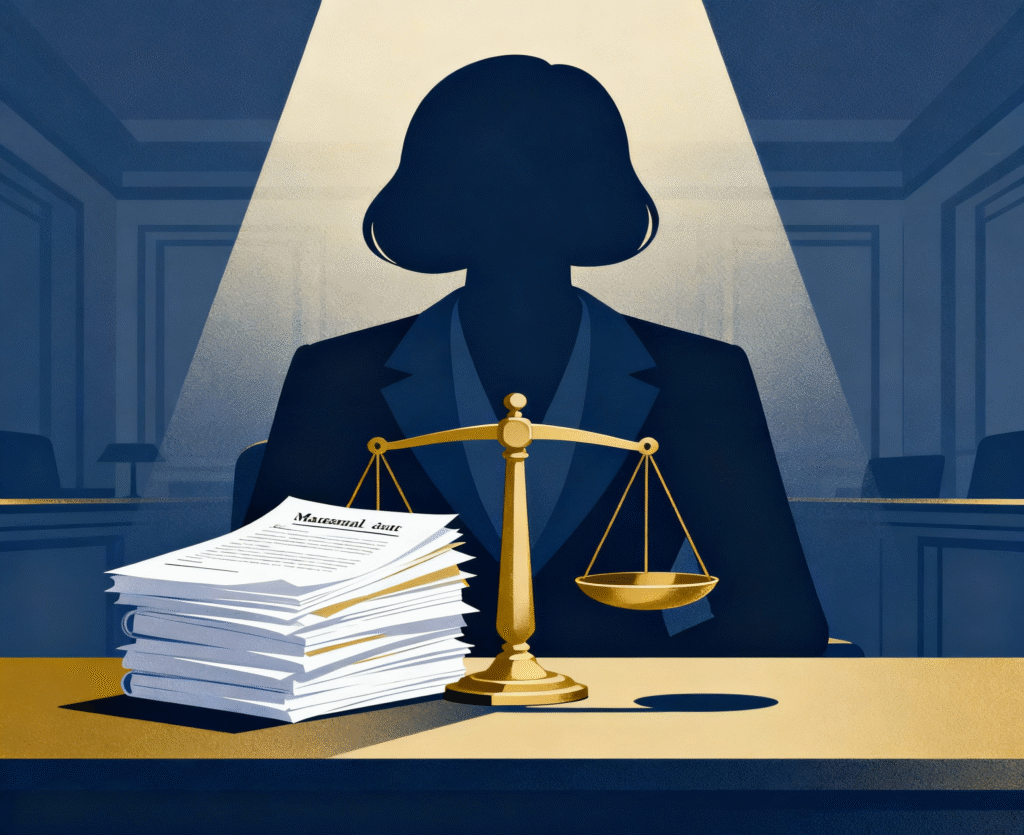Published on: 5th August, 2025
Authored by: Dr. Alok Kumar
Associate Professor of Law, SBU
Preface
Social Impact Assessment (SIA) has emerged as a vital tool to ensure that development projects do not harm communities and instead create sustainable benefits. In a fast-developing country like India, large-scale projects in infrastructure, mining, energy, and urban development often require land acquisition and may displace people. SIA helps in understanding and mitigating these impacts. However, India’s SIA framework still faces significant gaps when compared to global standards. This blog explores the concept, importance, legal provisions, global best practices, challenges, and possible reforms to strengthen India’s SIA regime.
In India, mega projects- whether highways, mining, dams, or smart cities- promise growth. But they also disrupt lives, livelihoods, and communities. The Social Impact Assessment (SIA) is our compass for ensuring that development is not only fast but also fair. While India has made SIA a legal requirement under the Right to Fair Compensation and Transparency in Land Acquisition, Rehabilitation and Resettlement Act, 2013 (LARR), the gap between law and practice remains wide. It’s time we bridge that gap-by learning from the world’s best.
Concept and Importance of Social Impact Assessment- Why Does it Matter?
Social Impact Assessment is a systematic process of identifying, predicting, and evaluating the potential social effects of a proposed project or policy. SIA is more than just a report. It is a people-first lens through which we examine how a project will affect human lives-jobs, housing, health, culture, and social ties. Done well, it:
- Protects vulnerable communities from being left worse off.
- Designs fair rehabilitation plans for displaced families.
- Builds trust between project developers and local communities.
- Ensures development is socially sustainable—not just economically profitable.
Legal Framework for SIA in India- India’s Legal Commitment to SIA
In India, SIA is mandated under the Right to Fair Compensation and Transparency in Land Acquisition, Rehabilitation and Resettlement Act, 2013 (LARR Act). Under the LARR Act, 2013:
- No land acquisition for public projects without an SIA study.
- Public hearings give communities a voice.
- SIA findings guide Rehabilitation & Resettlement (R&R) plans.
- Expert committees review SIA reports before project approval.
While this framework is progressive, its implementation often faces challenges.
International Standards and Best Practices- What the World Does Better
Globally, institutions like the World Bank, Asian Development Bank (ADB) and International Finance Corporation (IFC) have set high benchmarks for SIA. They treat SIA as a continuous process, not a one-time clearance. Global best practices include:
- Starting SIA early-even before project designs are final.
- Continuous dialogue with communities at every stage.
- Independent third-party reviews for credibility.
- Special focus on women, indigenous peoples, and vulnerable groups.
- Post-project monitoring to check if promises were kept.
Challenges in Implementation of SIA in India- Where India Falls Short Compared to Global Standards
- Timing of SIA -In India, Social Impact Assessments are typically conducted just before the land acquisition approval stage. By this time, major project decisions are often already made, limiting the scope for meaningful changes. In contrast, global best practices- followed by institutions like the World Bank and Asian Development Bank—integrate SIA right from the earliest stages of project planning, allowing social concerns to shape the design itself.
- Stakeholder Engagement – While Indian law requires public hearings, these often take place only once and tend to be formalities. International standards emphasize ongoing, multi-stage engagement with affected communities, ensuring their voices influence decisions at multiple points during the project lifecycle.
- Independence of Review – In India, SIA reports are usually reviewed by government-appointed committees, raising concerns about impartiality. Global practice encourages review by independent, accredited third-party experts to ensure objectivity, transparency, and credibility.
- Monitoring and Follow-up – Post-approval monitoring of social impacts in India is weak and inconsistent. Once a project is cleared, there is often little oversight to check whether rehabilitation commitments are honored. Globally, continuous monitoring—both during and after project completion- is standard practice to ensure promised benefits actually reach affected people.
- Scope of Assessment – Indian SIA frameworks mainly focus on those directly displaced by the project. International frameworks take a broader view, assessing impacts on host communities, vulnerable groups, women, cultural heritage, and social networks, making the process more inclusive and comprehensive.
Strengthening Indian Policy and Legal Framework- Reforms That Can Transform India’s SIA
- Start Early – Make SIA part of project conception, not just a clearance formality.
- Build Capacity – Train more qualified SIA professionals and strengthen institutions.
- Independent Review – Use accredited agencies to evaluate SIA reports.
- Continuous Monitoring – Track impacts and R&R effectiveness even after completion.
- Adopt Global Safeguards – Align Indian guidelines with IFC, ADB, and World Bank standards.
Harmonizing Indian SIA Framework with Global Standards- Why Harmonization Matters
Bringing India’s SIA framework closer to global best practice will:
- Enhance transparency and credibility of development projects.
- Protect the rights and dignity of affected people.
- Reduce social conflict and speed up project execution.
- Attract responsible investment from global institutions.
Social Impact Assessment is more than a legal requirement- it is a moral and developmental necessity. While India has taken important steps through the LARR Act, its implementation can be significantly improved by learning from global best practices. By aligning its framework with international standards, India can ensure that development is not only about economic growth but also about social justice, equity, and sustainability. If we adopt global best practices, we won’t just build roads, ports, and power plants- we’ll build a more just, equitable, and sustainable India.
*Dr. Alok Kumar is an Associate Professor of Law at Sarala Birla University, Ranchi. He is a renowned expert in policy regulatory frameworks, with a strong background in academic inquiry and research. He continues to contribute to the field through research and policy analysis.
Bibliography
- Right to Fair Compensation and Transparency in Land Acquisition, Rehabilitation and Resettlement Act, No. 30 of 2013, § 4, INDIA CODE.
- World Bank, Environmental and Social Framework (2017).
- International Association for Impact Assessment (IAIA), Social Impact Assessment: International Principles (2003).
- N. Human Rights Council, Report of the Special Rapporteur on Adequate Housing, U.N. Doc. A/HRC/43/43 (2020).
- Law Comm’n of India, Report No. 243: Section 498A IPC and Allied Provisions (Aug. 2012).
- Asian Development Bank, Safeguard Policy Statement (2009).
- World Bank Inspection Panel, Annual Report (2021–2022).
- Comptroller & Auditor General of India, Performance Audit Report on Land Acquisition and Rehabilitation, Report No. 32 (2020).
- Narmada Bachao Andolan v. Union of India, (2000) 10 SCC 664.
- World Bank, Operational Policy 4.12: Involuntary Resettlement (2001).
- IFC, Performance Standards on Environmental and Social Sustainability (2012).
- UNDP, Guidance Note: Social and Environmental Standards (2021).
- EIA Notification, Ministry of Environment, Forest and Climate Change, S.O. 1533(E) (2006).
- Tata Institute of Social Sciences (TISS), Review of SIA Reports in India (2021).
- World Bank, Good Practice Note on Addressing Gender-Based Violence (2020).
- Law Comm’n of India, Report No. 180: Article 20(3) and Right Against Self-Incrimination (2002).
- National Green Tribunal Act, No. 19 of 2010, § 14.
- National Human Rights Commission, Advisory on Displacement and Rehabilitation (2017).
- Kalpavriksh v. Union of India, O.A. No. 347/2016, NGT (Principal Bench).
- Sukhdev Singh v. Bhagatram Sardar Singh Raghuvanshi, (1975) 1 SCC 421.
- Orissa Mining Corp. v. Ministry of Environment and Forests, (2013) 6 SCC 476.
- IFC, Access to Information Policy (2021).
- Amnesty International, India: Forced Evictions and the Right to Housing (2017).
- Rural Litigation and Entitlement Kendra v. State of Uttar Pradesh, 1985 SCR (3) 169.
- UN General Assembly, Basic Principles and Guidelines on Development-Based Evictions and Displacement, U.N. Doc. A/HRC/4/18 (2007).
- Centre for Policy Research (CPR), Compliance of SIA Under LARR Act (2020).
- UNEP, Guidelines for Conducting Social Impact Assessments (2015).
- M. Seervai, Constitutional Law of India vol. 3, 1465–67 (4th ed. 1996).
- Ministry of Rural Development, Manual for Social Impact Assessment under LARR (2014).
- UNDP, Human Development Report: Sustainability and Equity (2011).
- Writ Petition (Civil) No. 899 of 2013, Common Cause v. Union of India.
- Centre for Science and Environment, Report on Displacement in Mining Regions (2019).
- UNDP India, Social Impact Assessment Best Practices (2020).



